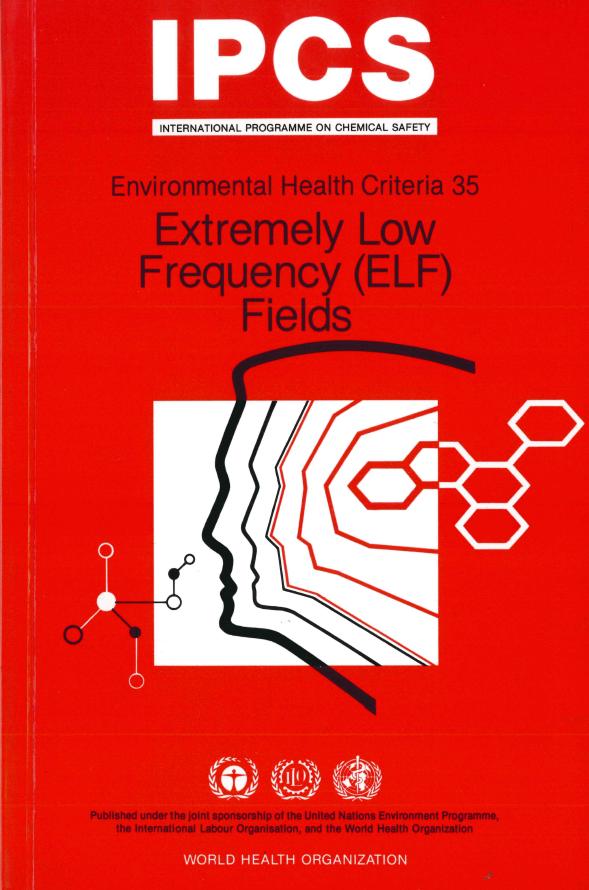EHC 35 on ELF - 1984
ISBN: 92-4-154095-8

Environmental Health Criteria 35: Extremely Low Frequency (ELF) Fields. Geneva, World Health Organization; 1984. ISBN 92-4-154095-8.
Published under the joint sponsorship of the United Nations Environment Program, the International Committee on Non-Ionizing Radiation of IRPA, and the World Health Organization - © WHO, Geneva, 1984.
Excerpt: "This document comprises a review of data on the effects of ELF fields, predominantly ELF electric fields at 50 and 60 Hz, on biological systems pertinent to the evaluation of health risks for man. The purpose of the document is to provide information for health authorities and regulatory agencies on the possible effects of ELF field exposure on human health, and to give guidance on the assessment of risks from occupational and general population exposure. Areas in which uncertainties exist and further research is needed are also indicated.
The document includes a review of the data on the biological effects on human beings and animals of exposure to low frequency electric and magnetic fields in the frequency range of zero to 300 hertz (Hz) (ELF).a Data on the biological effects of exposure to sinusoidally varying fields are mainly concerned with effects in the range of 5 - 20 Hz or at 50 and 60 Hz, while limited data are available on effects scattered throughout the ELF spectrum. Data on studies with non-sinusoidal waveforms in this range have also been considered. Effects of electrostatic and magnetostatic fields are not included.
As the document mainly concerns effects directly attributed to ELF electric fields, the effects of co-generated ozone, noise, ultraviolet radiation (UVR) and X-rays from corona discharges, induced short-circuit currents, etc., which may be important factors in the overall transmission line environment, are discussed only briefly.
In general, the effects of contact currents have not been considered in detail since restriction of leakage currents from, for example, household appliances and electromedical devices, is already treated by national and international standards."
